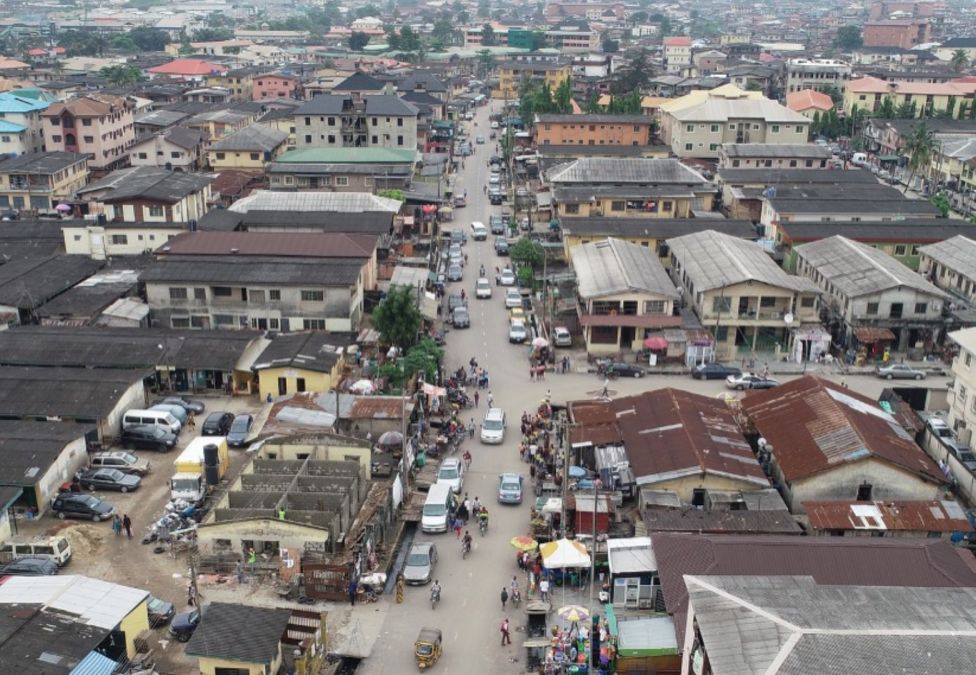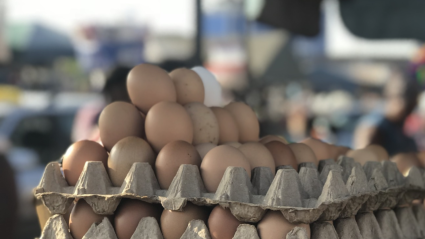
COVID-19 is very much an urban disease. What does this mean for the world’s fastest urbanizing region, Africa?
Introduction
The COVID-19 pandemic is exposing the interdependence and vulnerability of our world. As we know, the dissemination of the virus had two major causes: international air transport and proximity of human interactions (including in public transport). COVID-19 is therefore very much an urban disease. According to UN-Habitat [i], around 95% of the world’s population diagnosed with the virus lives in urban areas, particularly in large agglomerations. The head of UN-Habitat, Maimunah Mohd Sharif, notes that the pandemic “has brought into sharp relief some of the fundamental inequalities at the heart of our towns and cities.”
What does this mean for the world’s fastest urbanizing region, Africa? The continent today is home to 1.35 billion people, 43% of whom live in urban agglomerations. The UN projects that this number will double in the next 16 years, with Africa’s urban population reaching 1 billion by 2036 [ii]. At the moment, more than half of these urban dwellers (around 300 million) live in slums characterized by overcrowding, lack of basic services, and precarious housing structures.
African governments and citizens are today facing head-on the risks posed by the pandemic in African cities (slums as potential transmission hotbeds) as well as the consequences (reduction of employment opportunities and food shortages in poor settlements). This article proposes alternative approaches for providing housing and public transit, revitalizing the economy, and feeding Africa’s urban poor during and after COVID-19.
Urban density in times of physical distancing
Urban density is, in general, advisable. Adequate density and compactness are a commitment of UN member states (adopted at the Habitat III Conference in October 2016) as higher density minimizes costs of urban infrastructure and prevents urban sprawl. Despite slums’ overcrowded conditions, most have relatively low density compared to high-rise buildings that could provide density without crowding. But because urban densification increases housing prices and health risks, an acceptable trade-off has to be found – particularly at a time of increasing transmissible diseases.
Physical distancing is particularly challenging in slums where people live and work close to each other and where social solidarity requires frequent interactions. Complete lockdown measures in urban areas are not easily enforceable. But many African towns and cities are implementing curfews as well as measures for wearing face masks and more frequent hand washing. In spite of multiple constraints and thanks to vigorous awareness campaigns, in most cities inhabitants are doing their best to respect these safety precautions.
What can urban planners in Sub-Saharan Africa learn from the COVID-19 crisis? The answer is certainly not to simply get rid of slums (as recently done in Nairobi’s Kariobangi area, where 5,000 people were forcefully evicted earlier this month [iii]). Reducing overcrowding would instead mean promoting more adequate housing solutions, more efficient services, broader streets and larger public spaces. This would require proactive urban policies and well-targeted public subsidies supporting the kind of projects initiated by several African municipalities in the 1980s, that focused on “sites and services” and slum upgrading. It is time to revisit these approaches.
African governments should also encourage the development of more balanced networks of cities, and of “mega-regions” combining cities and towns of all sizes and agricultural areas. Today, although only 14% of Africa’s urban dwellers live in in cities of more than 5 million inhabitants (compared to 54% living in agglomerations of less than 500,000 inhabitants) [iv], most private investment remains concentrated in the largest agglomerations. More public investment (including in health facilities) and fiscal incentives to bring in the private sector are also required in secondary cities, which have their own share of slums.
From public transport to soft mobility
The pandemic has revealed how much cities depend on essential workers and how much these workers depend on public transport (essentially buses and mini-buses in Africa) to reach their jobs. Use of public transport unfortunately presents high transmission risks for urban workers.
Increasing mobility (local, national, and international) has been a feature of globalization for three decades. Is it possible to go back to a more local form of economic development – and if so, how? The on-going digital revolution could enable a new form of “soft mobility.” Governments and companies could reduce the distances between workplaces and residences, encourage teleworking whenever possible, and strongly promote commuting by biking and walking. Substantial changes in land use and zoning regulations would allow a spread of working units into residential areas, shorten commuting times, and reduce the need for public transport.
As several Western cities (such as Copenhagen, Amsterdam, London, and Seattle) are already doing, African cities can create or enlarge walkways for pedestrians and designated lanes for two-wheelers (bikes, electric bikes, scooters, etc.), separated from motor traffic. Thousands of Tunisian citizens demonstrated recently (with their bikes) to obtain such facilities. The current crisis offers a golden opportunity to promote these autonomous, healthy, and non-polluting means of transportation. Hopefully such measures will remain in place and be generalized in the post-COVID-19 era.
Economic revitalization and the informal sector
Today’s international division of labor has included relocation of the most productive industries to Asia and the concentration of the digital economy in a few high-tech hubs, essentially in the USA and China. But the pandemic is pushing experts to consider economic reforms that can help “re-localize” industries, reduce territorial and social disparities, and move towards a more local and equitable form of “glocalization.” In Africa two additional priorities have emerged for economic recovery and revitalization: making the case for debt relief (see the article in this series from Prof. Danny Leipziger) and supporting the informal economy, discussed below.
The International Labour Organization (ILO) estimates 71.9% of non-agricultural employment in Africa is in the informal sector (78.6% for women, 67.7 % for men) [v]. This sector provides crucial livelihoods to the most vulnerable and even for the lower middle-class. But people working in the informal economy lack social protection and support mechanisms if they lose their livelihood. They have no safety nets nor alternative incomes. They often lack disposable cash and cannot stockpile food. At the moment many of them need public assistance, in cash or in-kind, to survive. According to a sample survey of five slums in Nairobi conducted on 22 April, 81% of residents had already suffered complete or partial loss of their jobs and income due to COVID-19 [vi]. And even in slums, rent still comes due at the end of the month.
In post-COVID-19 times, policy responses should focus on unleashing the untapped entrepreneurial potential of the informal sector and ensuring its resilience. This goes for both the productive and commercial sectors, from carpenters to street vendors, tailors to hardware providers. Instead of being harassed by authorities and considered as lawless vagrants, informal workers, and the urban poor should be recognized by policymakers as essential to the survival and daily functioning of African cities.
Feeding the Urban Poor
The first priority at the moment for the urban poor is to find an affordable food supply. Africa is a net food importer (roughly USD 80 billion per year) and an exporter of primary products such as tea, cotton, cocoa, coffee and flowers. Supply chains of staple food are currently disrupted and access to food has become more complicated. According to the same survey of Nairobi slums, 70% of residents reported eating less or skipping meals due to the pandemic while 78% reported an increased cost of food. The question of where to buy food was also raised.
Informal food markets are vital to feeding African cities. Governments should allow more dispersed market sites during the pandemic, and provide some support to informal market workers. Informal food traders are the heartbeat of urban food systems, providing income for farmers, nutrition for poor consumers, and resources for essential urban services. African governments’ post COVID-19 policies should account for this important trade and not further relegate it to the shadows of the economy.
In term of eating patterns, a main challenge in Africa (and Asia) is to convince people to refrain from eating “bush meat” (monkeys, pangolins, etc.). This meat is made available illegally in informal markets. Enforcing law and order more vigorously should be a first step. Other steps are to provide alternative feeding options and to educate people on the risks and advantages of each option. The Food and Agriculture Organization could help in organizing necessary information campaigns.
Early Warning Systems
Cities are vulnerable. In the last 15 years a variety of Early Warning Systems (EWS) have been developed around the world. They help to reduce economic losses and mitigate the number of injuries or deaths from disasters. Early warning information empowers people to take action prior to a disaster. EWS start with data collection and risk assessments of predefined hazards and vulnerabilities, followed by risk monitoring and public warnings. They should be complemented by the preparation and testing of national and local response plans.
Many EWS aim at increasing resilience to natural disasters and climate-related risks [vii]. But disasters are not only natural. They could be human-made, for instance technological (Bhopal in India, Seveso in Italy, Fukushima in Japan) or sanitary (as is the case today), or emanate from food shortages. EWS should address these risks as well.
Urban observatories should be set up, financed, and staffed in Africa as in other parts of the world to be used for risk assessment and early warning. The lack of timely warnings has been a major hindrance to the response to COVID-19 all over the world.
African responses, now and tomorrow
Western countries were unprepared for the pandemic, not equipped and not determined, some leaders hesitating, looking for scapegoats, not relying on scientific evidence, suggesting absurd cures. These countries could not only support the African continent, they should also learn from it – as, so far, African countries have been able to hold off the worst of the pandemic in spite of the extreme fragility of their health systems.
Africa innovates every day. Kenya created the first system of cash transfer by mobile phone (M-Pesa) in 2007. Since March 2020, private companies and micro-entrepreneurs have been producing millions of face masks while wealthier countries were waiting for Chinese exports. Hand-washing stations have been spontaneously established in many slums [viii].
As for governments, they have taken measures to strengthen their public health systems. Some countries have initiated cash transfers and food distribution to support the most vulnerable, often with support from the World Food Program. Ideally this might lead to the establishment of long-lasting safety nets and even to experiments with universal basic income.
As the London School of Hygiene and Tropical Medicine noted, “Clearly people in Africa have reacted – both individuals taking more precautions as they learn about the dangers of COVID-19, business changing practices, and policymakers imposing restrictions to slow spread.” But as the recent emergence of virus hot spots in Kano, Mogadishu, and other large African cities warns us, the war is far from over. African countries need to accurately inform and protect populations while following the World Health Organization’s guidance: Test, Trace, Isolate and Treat.
Conclusion
I am convinced that COVID-19 will not change the way people view cities. Even if some journalists write about risky cities, their alarming pieces will be ignored by most people who know very well, particularly in Africa, that cities are above all places of job opportunities, social interactions, education, and cultural development.
Historically, cities mainly shrink for economic reasons, rarely for environmental causes (such as lack of water). For instance, some mining cities have died when the surrounding mines are exhausted, and industrial cities could follow the same route. But cities have never disappeared for health reasons. This is why the UN should provide guidelines for the promotion of safer and healthier cities as part of the wider “sustainable cities” development paradigm. . UN-Habitat and WHO have already published a sourcebook in that direction [ix].
New York City, capital of the world, has unsurprisingly been the agglomeration most affected by COVID-19. But it will survive and bounce back. African governments on their side should revisit their urban policies based on lessons learned during the COVID-19 outbreak, to make cities more resilient to the next crisis and also to address and reduce pervasive social and spatial inequalities. A huge but motivating task [x].
Notes
[i] See unhabitat.org.
[ii] Detailed official statistics on urbanization can be found on World Urbanization Prospects: The 2018 Revision, UN-DESA, Population Division, 2018
[iii] See Nita Bala, “Forced evictions leave 5,000 Kenyan slum dwellers at risk of coronavirus,” Reuters, May 6, 2020.
[iv] World Urbanization Prospects: The 2018 Revision
[v] See Women and Men in the Informal Economy: a Statistical Picture, ILO, 2018
[vi] See “COVID-19 Lockdown Exit Strategies for Africa,” UNECA, 5 May 2020
[vii] See “Five Approaches to Build Functional Early Warning Systems,” UNDP, 2018
[viii] On water and hygiene, see “WASH: COVID-19 Preparedness and Emergency Response,” UNICEF, 01 May 2020
[ix] See “Integrating Health in Urban and Territorial Planning: A Sourcebook,” UN-Habitat and WHO, May 21, 2020
[x] See “How to Formulate a National Urban Policy: A Practical Guide,” UN-Habitat, 2019
The views and opinions expressed in this publication are solely those of the author. They do not purport to reflect the opinions or views of COVID-19 Africa Watch or any affiliated organization.



